Any owner of the garden, who decided to start growing tomatoes, sooner or later faces the problem of their disease. The leaves may become black spots, twist, turn yellow, or even begin to shrink. There is a sufficient variety of diseases and pests that can quickly destroy the seedlings or all the bushes of tomatoes to one. It is worth learning more about it, for the safety of the future harvest.
Table of contents
- Diseases of tomatoes and seedlings
- Chloratism curl of tomato leaves
- Gray rot
- Septoria
- Root rot
- Tomato stem necrosis
- Bacterial wilt
- Fomoz
- Mosaic
- Alternaria or macrosporia (brown or dry spotting)
- Late blight
- Brown olive spot (cladosporiosis)
- Blackleg
- Vertex Rot
- Cracking fruit
- Yellow or green spot on the stem
- Silvery spots on the leaves
- Oedema
- Soil phytotoxicity
- Twisted string
- Mealy dew
- Strick
- Black dots
- Why are tomatoes sick?
- Signs of lack of essential batteries
- Because of what the leaves turn yellow
- Pests and description of the fight against them
Diseases of tomatoes and seedlings
Chloratism curl of tomato leaves
Manifested in the form of yellow or light green leaves chloratical species. The plant becomes short with a curly tip. The manifestation of the disease contributes to tobacco mosaic virus or tobacco necrosis. Spread with contaminated soil.
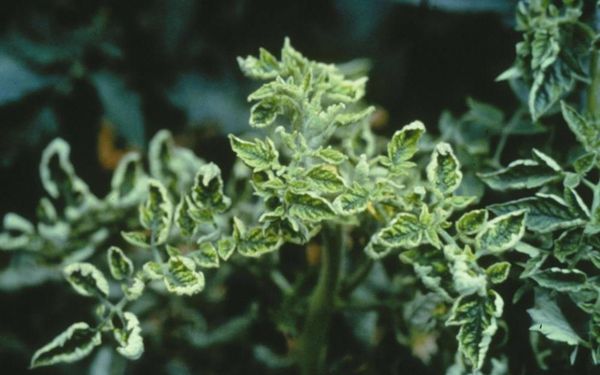
Gray rot
Gray rot is a dangerous disease, destroying all the bushes of tomatoes at once. This is a fungal disease that occurs with the presence of brown weeping spots. Have color from brown to gray, dry at first, then slippery.
Starting from the stem, the fungus can cover the entire plant overnight.The first susceptible sites for the disease are the places of the injured plant (scraps of leaves or tying up with supports).
The disease begins with cool weather and constant rain. If the seedlings in the greenhouse, then there is a poorly ventilated air, also high humidity.
Treatment should start immediately, but the weather should be sunny. The method of struggle: remove sick leaves so that the fungus does not go into the stem of the plant It is advisable to avoid watering at this time.
A preventive method will be spraying infusion of minced garlic infused in water, in a ratio of 30 g to 10 liters. There may be chemical protection methods: Multi, Euparin, Bayleton.
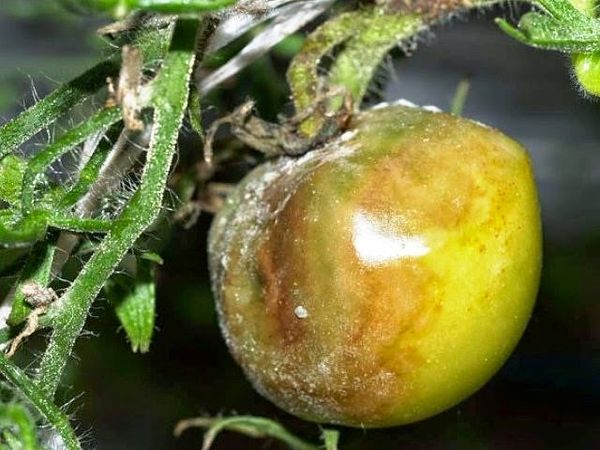
Septoria
Fungal disease in which leaves and stalks of tomatoes suffer is called septoriosis or white spot.
First, the leaves at the bottom of the plant, near the ground itself, wither and dry. Then they form light-colored spots, which eventually turn brown with a black dot in the middle. After that the sheet disappears.
For this assists high humidity. Not transmitted by seed.
For treatment will require remove infected leaves, even if you need to break them all. Also, in prophylactic methods, treat with copper oxide, Tsinab, Horus.

Root rot
The main symptom of the disease is the presence of "black legs" in seedlings or plants. Going on due to poorly cultivated soil (not sterility, strong humidity). Losses may not be big.
It is possible to remove root rot by replacing the soil in the greenhouse, for open ground processing of seedlings and earth with disinfectants.
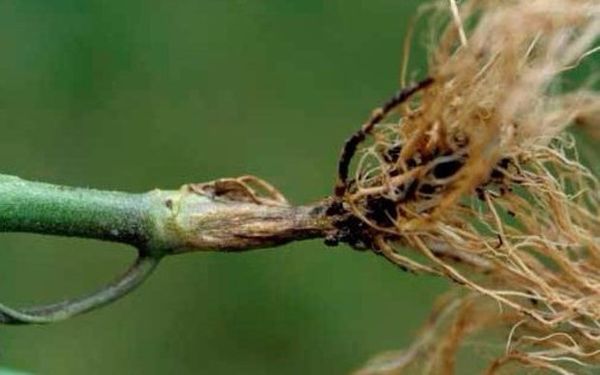
Tomato stem necrosis
The first signs of necrosis of a tomato stem are the presence of cracks of the stemI, with the subsequent formation of air roots in them. Appears on the already formed bush with the first clusters of fruits.
Plant with such a disease completely killed. The root cause is infected seeds as well as soil.
To protect other bushes, infected need to be removed and burned. For tillage requires the use of Fitolavin-300.
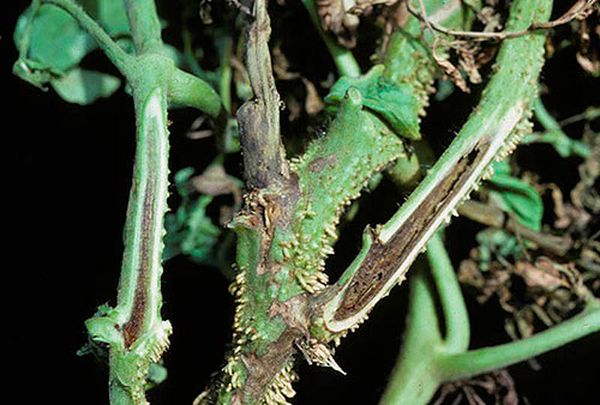
Bacterial wilt
The disease spreads sharply and overnight, can destroy many bushes at once. Manifested in the form of emptiness in the stem and the presence of fluid in it. The cut color is brown.
Cure does not seem possible. It should be immediately removed and burned.
The remaining, not infected bushes, process, as well as, nearby, other plants, with the solution Fitolovin 300 (0.6-1%). For each plant not less than 200 ml of solution. It is impossible to cure infected bushes, but it will protect healthy plants.
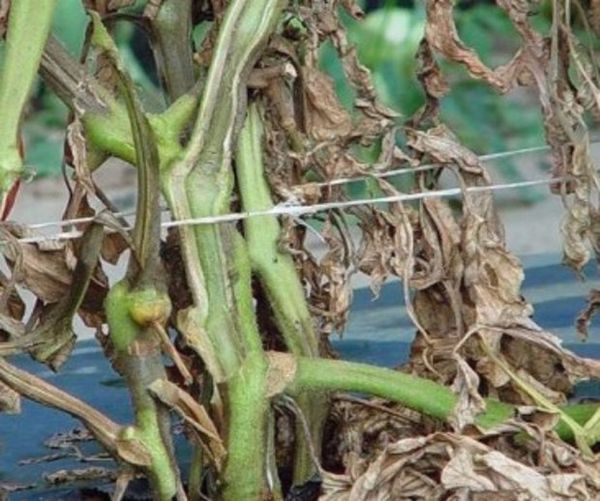
Fomoz
It is characterized by the presence of a brown spot near the stem. In the context of the whole pulp is rotten. Infected fruits break themselves off the stem. Disease occurs due to the large amount of fresh manure in the ground.
It is possible to treat with a plant treatment with Fundazol or Shield. Soil - copper sulfate.
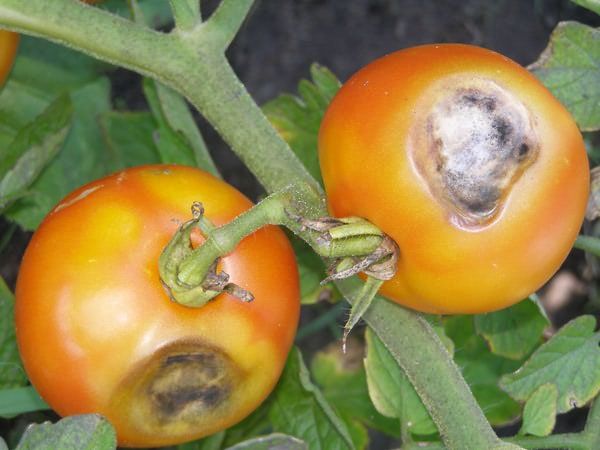
Mosaic
Mosaic infestation occurs mainly in tomatoes of old varieties, 2-3 years old suffer less. It is characterized by the presence of spots of yellow or green color in the form of a mosaic. Then they curl and frown. The bush dries out completely. You can rub up to 15% of the crop.
Since the main reason for the appearance of mosaic is seed infectionIt means that they should be processed before planting.
Dead bushes are burned. Young are treated with milk (non-fat) in the ratio of 1:10 liters with the addition of 1 tsp. urea. Process required 3 times a month.
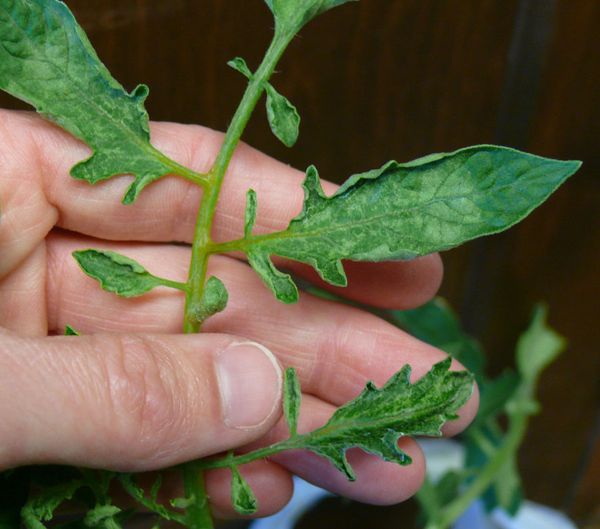
Alternaria or macrosporia (brown or dry spotting)
This fungal disease is characterized by the presence of large round spotslocated on the bottom sheets. Then rise above and go to the fruit, in the form of a brown spot at the base. At high humidity and high temperatures, fungi begin to appear.
In prophylactic methods it is required to spray tomatoes with antifungal preparations. With the manifestation of the disease, when the fruits are already ripe, treatment with biological products is required.
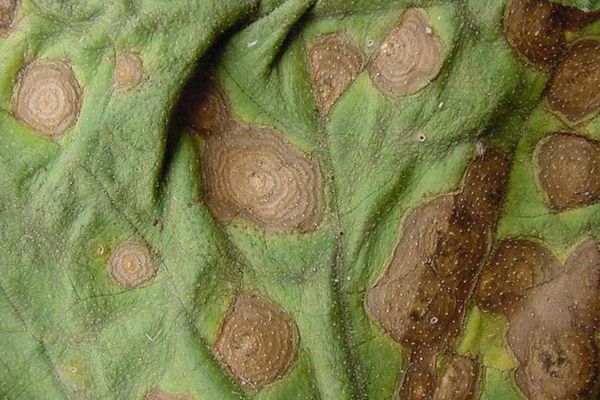
Late blight
The most common and well-known disease called phytophthora. She suffers bushes as an open ground, and in the greenhouses. The favorable environment for it will be a sharp change in temperature and high humidity.
Characterized by black leaves with a weak white bloom. The fruits have brown spots that grow quickly. Sick bushes need to immediately destroy.
This will require spraying the bushes once a week with whey. Created acidic environment kills the fungus. Also suitable chemicals such as: Barrier, Fitosporin, Zaslon.
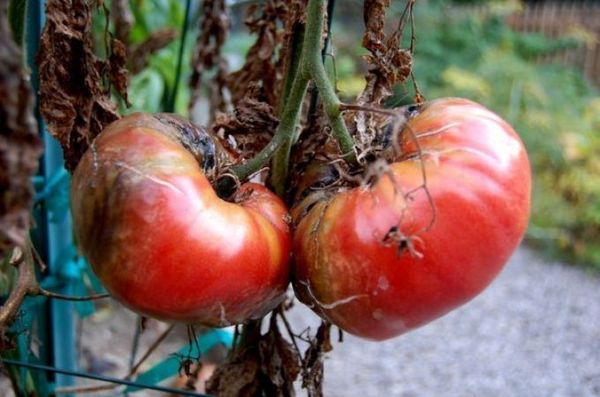
Brown olive spot (cladosporiosis)
Cladospariasis also has the appearance of a fungal disease. Mostly sick greenhouse types of tomatoes. A bush leaf initially suffers: covered with chlorotic yellow spots, merging into a large spot.
Under the leaf appear spores of the fungus, manifesting itself velvety brown. The disease develops at the stage of tomato flowering and the appearance of fruits. The earlier it appears, the worse for the bushes of tomatoes. At high temperatures, infection occurs quickly.
Rarely does the fungus spread to the fruit. If this happens, the fruit acquires a soft brown consistency. Watering with cold water and temperature drops will trigger the disease.
Copper-containing drugs will help fight: Barrier, Barrier, Bordeaux mixture.
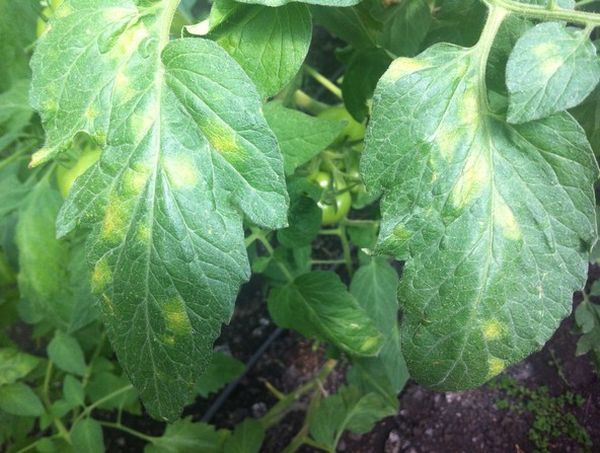
Blackleg
The black leg is expressed in the form of spores of fungi that penetrate the roots of the plant and the root area. At the root base, the stem turns black, weakens and dies less than a week after infection.
Strikes mostly greenhouse bushes, which have not met the conditions of cultivation. If the land is not changed, it is bad to air the greenhouse, and it is also abundantly watered, then tomato seedlings will become infected with this type of fungus.
It is possible to fight with a black leg with the help of loosening the soil, drying, processing with potassium permanganate (5 g. / 10 l of water)
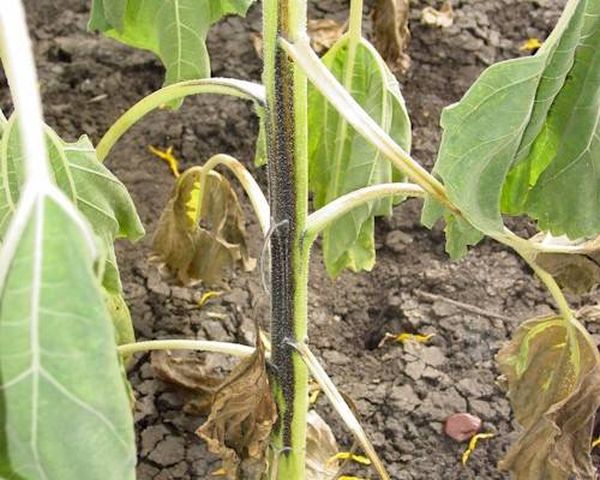
Vertex Rot
This disease is characterized by dark watery spots. Then it becomes darker and captures the entire surface of the tomato. The infected part dries out and becomes flat, with wrinkling.
Sometimes a disease can only be detected by cutting a tomato. It is formed due to the lack of watering and heat.
The main treatment is watering, especially during the period of fruit ripening. It is also necessary to spray 1% solution of calcium chloride.
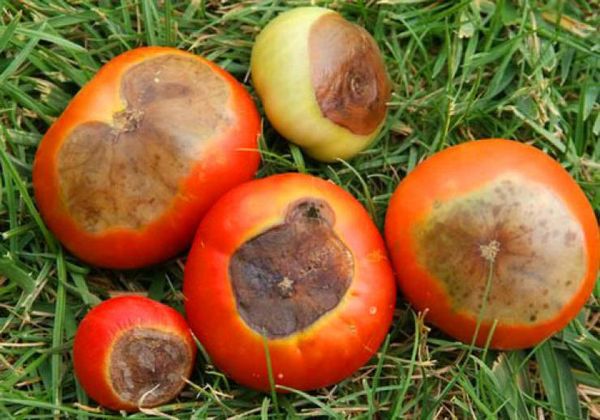
Cracking fruit
Leads to cracking fruit improper care of the plant. Occurs as a result of improper watering (dry soil first, then moisture excess).
Also to the cracking of the fruits of tomato leads to a surplus of nitrogen or incorrect use of pollination.
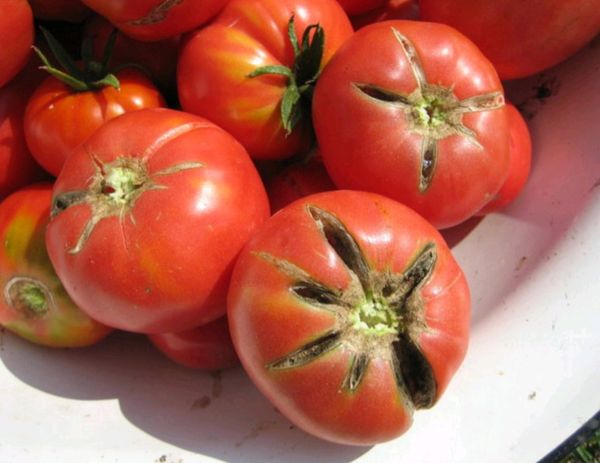
Yellow or green spot on the stem
If the variety of tomato does not include the presence of green color in the stalk, then this feature has acquired due to high temperatures.
Because of the action of heat, the red color of the tomato (pigment) burned out in the sun, and this led to the formation of carotene. it not a disease. Avoid only the creation of shading plants.
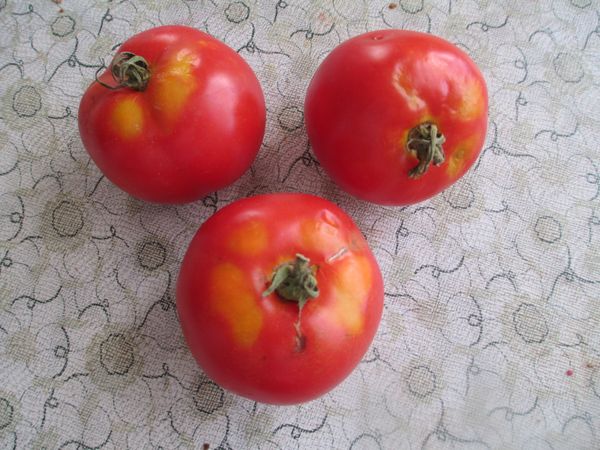
Silvery spots on the leaves
Some gardeners are frightened by the appearance of silvery spots on the leaves. it not a disease, it is a feature of the plant (anomaly).
The origin is caused by temperature fluctuations at night or daytime. Also, when creating hybrids, in the process of their poor processing.

Oedema
Oedema is also not a disease of a tomato. Characterized by leaf swelling due to improper watering. It is expressed in the form of convex stains in its similarity with white mold. It happens that this anomaly is due to inconsistencies in the temperature of the soil and air.
For prevention, it is recommended that the plants are well ventilated, enough sun.
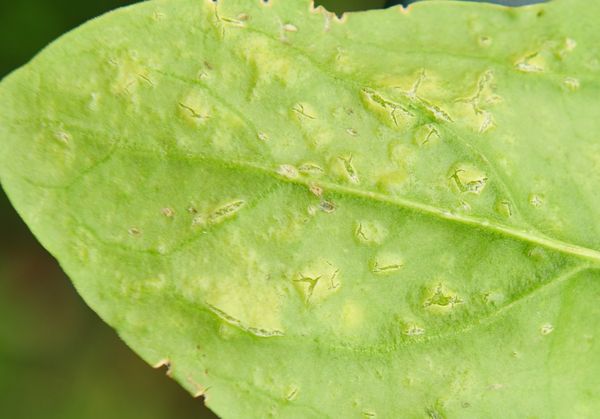
Soil phytotoxicity
Soil phytotoxicity occurs due to misuse fertilizing, fertilizers, which should bear the benefit of tomatoes, and go to the detriment of the plant.
Manifestations are different: from changing the color of the leaves to their drying out.
Twisted string
The origin of the torsion or curvature of the leaves depends on the conditions created by the plant. Improper watering, herbicide ingress to them, incorrect use of Tamaton growth stimulant.
If these violations occurred, then when ingested herbicides and growth stimulants leaves should be removed. For the overmoistened soil, its loosening is required.
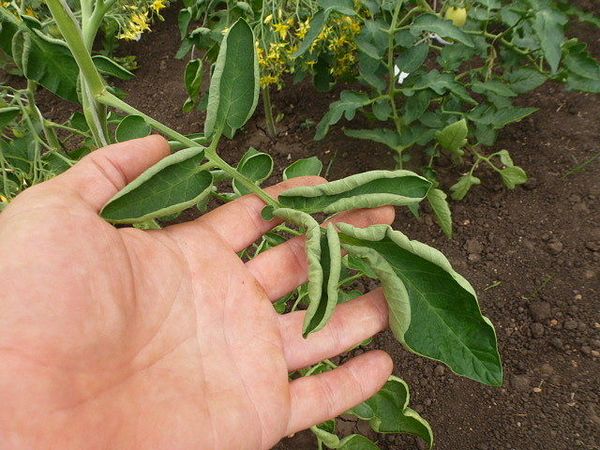
Mealy dew
If powdery mildew manifested itself on tomatoes, then you can lose the entire crop in a short time.It manifests itself in white bloom - the trunk and leaves begin to turn white. In most cases, the disease harms greenhouses. Suitable conditions: lack of moisture, low temperature.
The following measures are used for prophylaxis - tomatoes are treated with Strobi, Topaz fungicides, sodium humate as described.
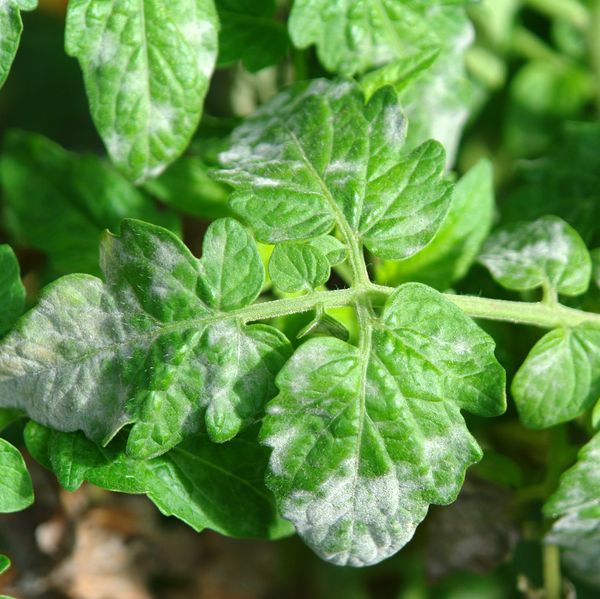
Strick
Strick has the form of wide dying strips on the bushes of the plant. On fruits, it appears as spots of various shapes and sizes. If the disease progresses, the bush dies.
Cure charged bush can not bebut you can minimize the appearance of a streak. To do this, use healthy seeds and prevent fluctuations in air temperature.
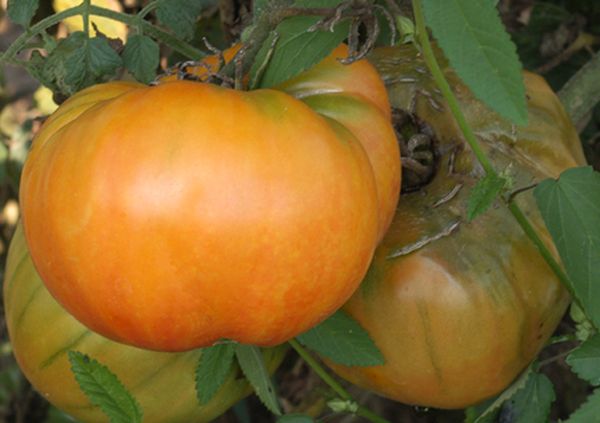
Black dots
The presence of such a disease can also destroy most of the crop. Manifested by the underdevelopment of the plant, the formation of black spots on the fruit. Arises due to infected seedstherefore, it is necessary to process them well before sowing. Before planting, it is also necessary to sanitize the soil, due to the fact that this type of bacteria lives in it for several years.
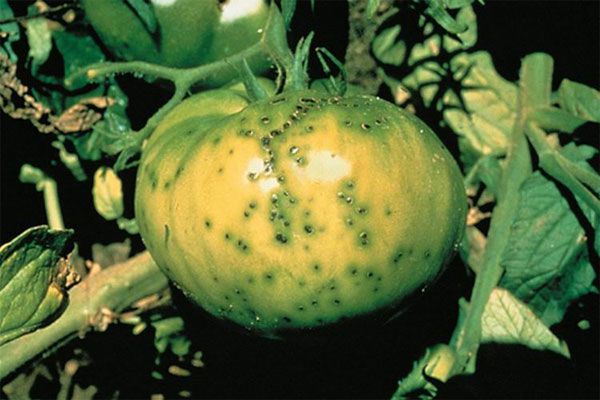
All of the above types are the most common diseases of tomatoes and its seedlings.
Some types of disease can simply scare the gardener, and can lead to a complete loss of all the bushes of tomatoes at once.
Dangerous for seedlings of tomatoes at home:
- Late blight
- Blackleg
- White leaf spot
- Brown Leaf Spot
- Black bacterial spotting
- Strick
- Mosaic
Viral:
- Mosaic
- Strick
The most common:
- Necrosis of the stem
- Phytophthora
- Mosaic
- Alternaria or Macrosporia
- Chloratism curl of tomato leaves
- Gray rot
- Septoria
- Root rot
- Bacterial wilt
- Brown olive spot (cladosporiosis)
- Fomoz
- Blackleg
- Root rot
- Vertex Rot
- Odema
- Cracking fruit
- Yellow or green spot on the stem
- Silvery spots on the leaves of tomatoes
Why are tomatoes sick?
- Invalid dressing. Most of all, a surplus of nutrients in the soil is reflected in tomatoes. It is better not to feed them, than to overfeed. They begin to spin leaves. The trunk of the plant thickens, many shoots appear. All this hinders the normal development of the fruit.
- Bad conditions of detention. For normal growth tomatoes require abundant watering, good ventilation.
- Viral infections.
- Wind. Wind can cause improperly stored herbicides.
Signs of lack of essential batteries
| The shortage of which element | Symptoms of shortage |
| Nitrogen | The leaves turn completely yellow, no streaks of any color. |
| Phosphorus | At the initial stage the leaf turns blue, then it turns brown and turns black. |
| Kalia | On the leaves - blackened edges. In fruits, it appears low in sugar (becomes sour). |
| Gland | Yellow leaves with the presence of green veins. |
| Bora | Bad fruit ovary |
| Calcium | Presence of gray or brown tops |
| Magnesium | Yellow leaves with streaks of red color. |
| Manganese | The symptoms are similar to the mosaic disease, but it appears from the upper leaves near the roots. |
Because of what the leaves turn yellow

Lovers of tomato cultivation often wonder about the presence of yellow leaves in plants.
There are reasons for this trouble:
- Root disruption. Occurs due to lack of space for the roots to grow. The roots of closely spaced bushes are intertwined and cannot breathe.
- Hypothermia. A sharp drop in temperature leads to yellowing or bluishness of the entire bush.
- Root damage. Manifested by the presence of yellow lower leaves. It happens because of soil loosening or transplanting. The plant quickly returns to normal.
- Insufficient watering.
- Excessive humidity.
- Lack of nutrients.
- Fusarium wilt. Fungal disease in which the root first falls ill, then the stem. When running cases, the moisture is not absorbed by the plant begins to wilt. The appearance of the fruits of a small underdeveloped size.
Pests and description of the fight against them
The most famous types of pests are:
- White fly
- Trips
- Garden scoop
- Aphid
- Wireworm
- Medvedka
- Colorado beetle
White fly
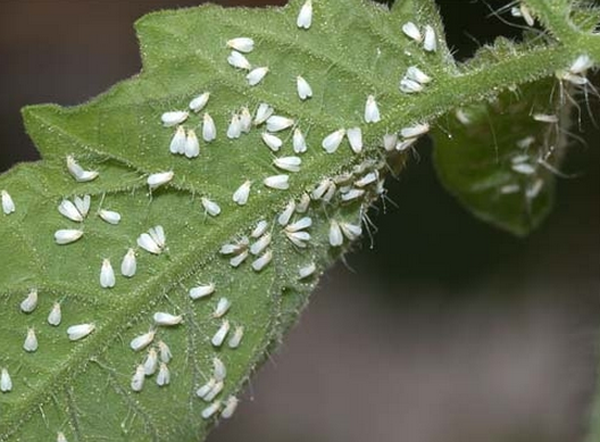
The whitefly lives mainly in greenhouses. You can identify by the resulting black on the leaves. It is formed due to the fact that the pest feeds on the sap of the plant, and the formation of a sticky film is their surplus. The plant does not breathe and begins to die.
When a whitefly is detected, you can simply touch the leaves and a swarm of white insects will rise from them. The main harm bring the larvae.
You can fight the pest with the help of special adhesive tapes. Also washing the leaves with soapy water to remove sticky plaque. An effective way to fight is water infusion from the roots and leaves of dandelion, as well as an infusion on water from garlic.
Trips
Thrips capped the tops of plants and feed mainly on inflorescences, spoiling the ovaries of the fruits. Detected fairly easily due to characteristic light colored spots. Do irreparable harm.
Get rid of the pest is quite difficult, they are poorly amenable to treatment with insecticides. You can destroy if you spray "Fitoverm", "Karate", read the description in advance at home.
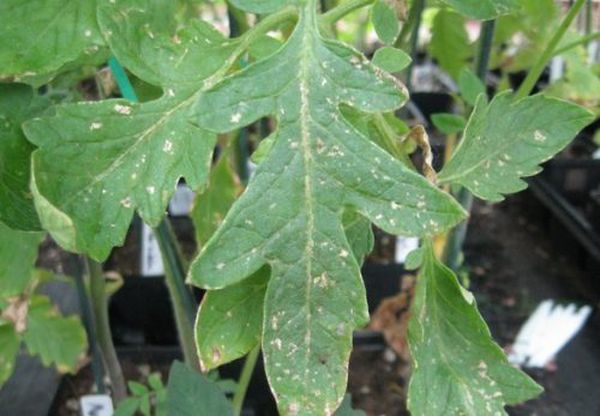
Garden scoop
A garden scoop has the appearance of a butterfly pest. Damage is caused by the deposited larvae, which can be found on the back of the leaves. If a large number, then seedlings can eat whole.
For prevention, it is necessary to destroy weeds and pluck the leaves, on which the larvae of a garden moth are found.
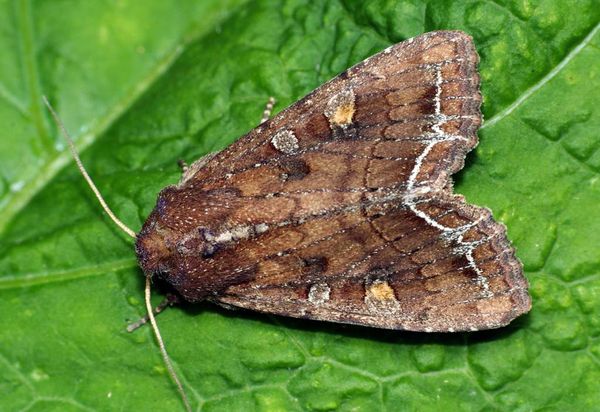
Aphid
Aphid is a minor pest located on the leaves of a plant and squeezing juice out of it. With a large accumulation of aphids, the bush may die.
Insecticide treatment will be required to remove aphids.

Wireworm
The wireworm lives in the land and spoils the roots of plants. If damaged, the tomato bush dries.
To get rid of this pest before planting tomatoes, potato tubers are buried in the ground. After a couple of days, they are dug up and burned.
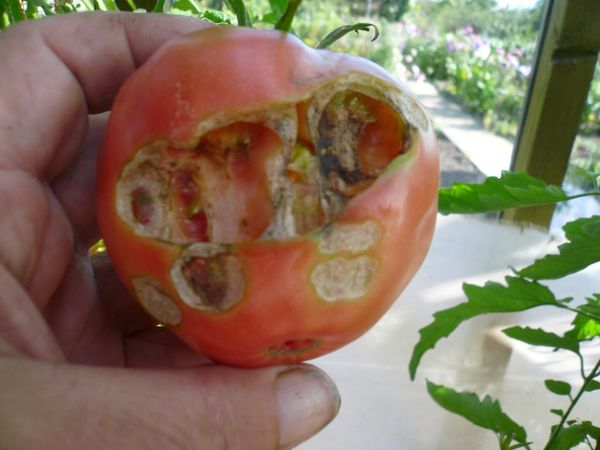
Medvedka
It is characterized by gluttony. Are dangerous both adults and larvae. Lives in wet soils rich in humus.
For the prevention of onions buried in the ground, spoiled food. Since it does not tolerate unpleasant odors. Also afraid of loud sounds, so put special noise turntables. Also used chemical protection: splash on the plant "Medvetoks", "Thunder", "Grizzly."
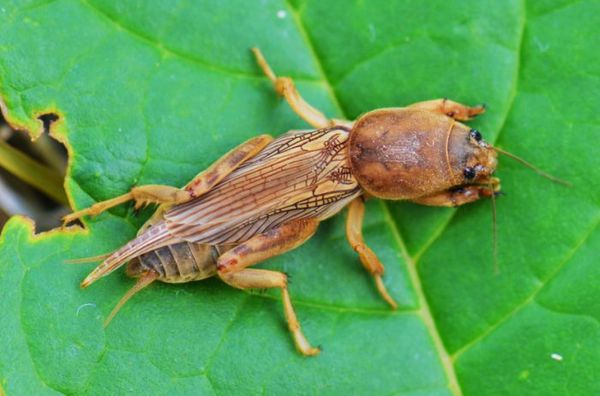
Colorado beetle
Colorado potato beetle and its larvae eat leaves and stems of tomatoes. To combat it, use a manual collection (if the amount is small).For the big defeat spraying by preparations is carried out: "Commander", "Iskra".
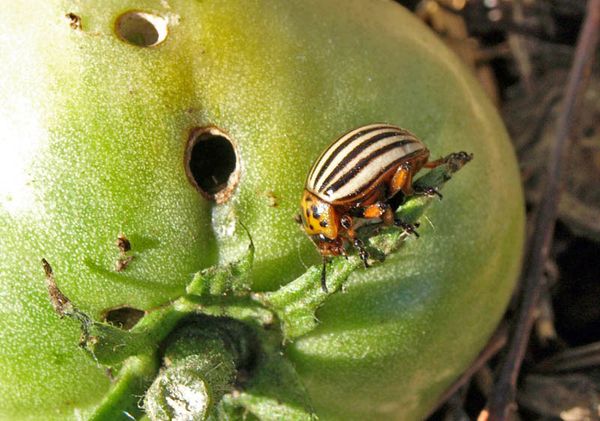
Tomato is inherently unpretentious plant. But his diseases and pests can discourage the cultivation of this wonderful vegetable. Nowadays, there are a sufficient number of all kinds of drugs to combat them to help grow a good crop.
